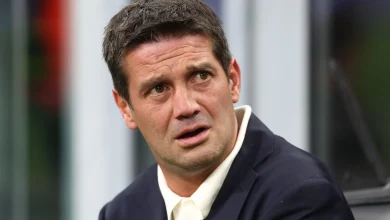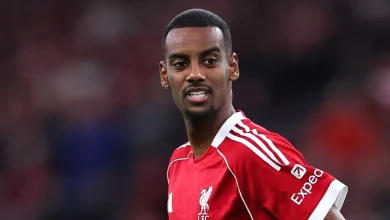Stranger Things Recap: How Heny Creel became Vecna

Henry Creel’s evolution into Vecna exposes Stranger Things’ hidden mastermind, turning the Upside Down into a world shaped entirely by his control. Stranger Things hides its best twist in plain sight. The show spends three seasons pretending the Upside Down is a chaotic ecosystem with random monsters. Then Season 4 walks in and quietly reveals the truth. The chaos had a mind. The mind had a past. And the past had a name the town once knew.Vecna is not a demon. He is Hawkins’ longest-running cover-up. The world just didn’t know it was covering anything up.
Stranger Things Scandal: Millie Bobby Brown Files Harassment Complaint Against Co-Star David Harbour
Henry Creel: The first anomaly
Before Hawkins had gates or Demogorgons, it had a boy who didn’t fit anywhere.Henry Creel arrives in Hawkins in 1959. The family thinks they have bought a fresh start. What they have really bought is a front-row seat to their son’s awakening. Henry has abilities the way some children have allergies. Sudden. Uncontrollable. Inescapable. His mind does not just observe the world; it enters it.He reads people’s thoughts. He manipulates objects. He senses the faults in everything. And because he is a child with too much power and no guardrails, the anger becomes a fuel. The murders of his mother and sister are not an accident. They are Henry deciding he is done pretending to be normal.That is the original Hawkins horror, buried under decades of rumours and a father blamed for a crime he didn’t commit.
Brenner’s prize specimen
When Henry survives the Creel incident, Dr Brenner finds him. Brenner does not see a murderer. He sees raw material. Henry becomes Subject 001, the prototype for every child who will later throw vans, open portals, and push the story forward.The lab doesn’t “give” Henry powers. It only tries to contain them. Brenner implants a device to suppress his abilities and turns him into a quiet caretaker for the younger kids. While the audience assumes Eleven is the rare one, the truth is sitting in the same hallway dressed like an orderly.Henry is not a mentor figure. He is a prisoner waiting for the lock to fail.
The massacre and the exile
The lock fails when he finally manipulates Eleven. He plays on her loneliness, tries to position himself as the only person who understands her, and then asks her to join him. She refuses, and that refusal pushes him into the massacre.The infamous slaughter in the Hawkins lab, teased for years, turns out to be the work of the original subject, not the supposed rogue experiment. Eleven beats him only because she accesses a surge of power she does not yet understand. The psychic blast she unleashes doesn’t kill Henry. It sends him through a tear in reality.That tear is the real birth of the villain.
Transformation into Vecna
Henry falls into the Upside Down. The dimension does not welcome him. It burns him, warps him and strips away whatever humanity he had left. The vines and the atmosphere reshape him until the boy becomes a creature built for the environment he now occupies.The transformation isn’t mystical. It’s biological and psychological. Henry always wanted to impose structure on a world he considered defective. The Upside Down gives him the perfect canvas. The Mind Flayer, the creatures and the hive-like network become tools for a vision he could never realise in the human world.Henry Creel becomes Vecna because the Upside Down gives him the one thing Hawkins never did: a system he could dominate.
Season-wise reconstruction
Season 1: The Hidden HandNothing in Season 1 mentions Vecna. The audience sees a Demogorgon and assumes the threat is primal. Later revelations show that the Upside Down already had someone capable of manipulating it. Will’s abduction and the gate’s behaviour align more with a guided environment than a random monster loose in a forest. Vecna remains unnamed but present in the architecture.Season 2: The Shadow Without a FaceThe Mind Flayer steps forward as the new antagonist. The possession of Will, the spreading tunnels and the growing intelligence all feel too coordinated to come from a mindless dimension. By the time Season 4 explains the hierarchy, it becomes clear that Henry’s influence has been active for years, even if he isn’t visually present.Season 3: The Anatomy of ControlThe body-snatching, the organic monster at Starcourt and the strategic strikes on Hawkins follow the same psychological pattern Henry used as a child: isolate, destabilise and break. Season 3’s horror is physical, but the intent reflects the same obsessive need for order and dominance that defined Henry long before the Upside Down touched him.Season 4: The RevealThis is where everything snaps into focus. Henry Creel, Subject 001 and Vecna are the same person. His motivations become visible. His methods, rooted in trauma exploitation, explain why he chooses particular victims. He doesn’t simply kill. He dismantles. He dismantles memories, guilt and identity. Every kill opens a gate because every kill expands the reach of his world.The heroes finally understand they were never fighting isolated monsters. They were fighting a man who built himself a kingdom.Season 5: The Final PhaseEverything indicates Vecna returns stronger. The open gates across Hawkins give him direct access. His rebuilt form suggests he has adapted again. Season 5 is not a monster battle. It is a confrontation between two original anomalies from the same lab: Eleven and Henry. The story started with both of them and will end with one of them unable to continue.Vecna is compelling because his villainy doesn’t come from the supernatural. It comes from human traits taken to their extreme. Isolation. Superiority. Intellectual arrogance. A belief that the world must match his internal design.He is not the Upside Down’s king. He is the Upside Down’s best customer.The show spent three seasons building puzzles. Henry Creel is the piece that makes the picture finally make sense.





